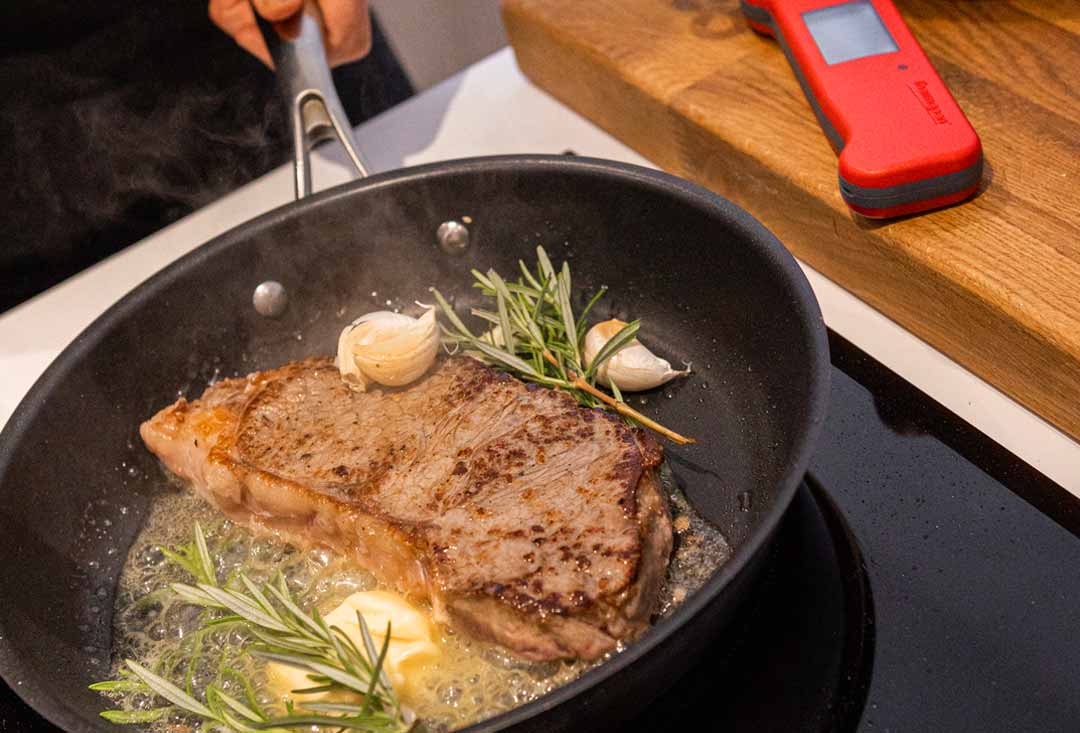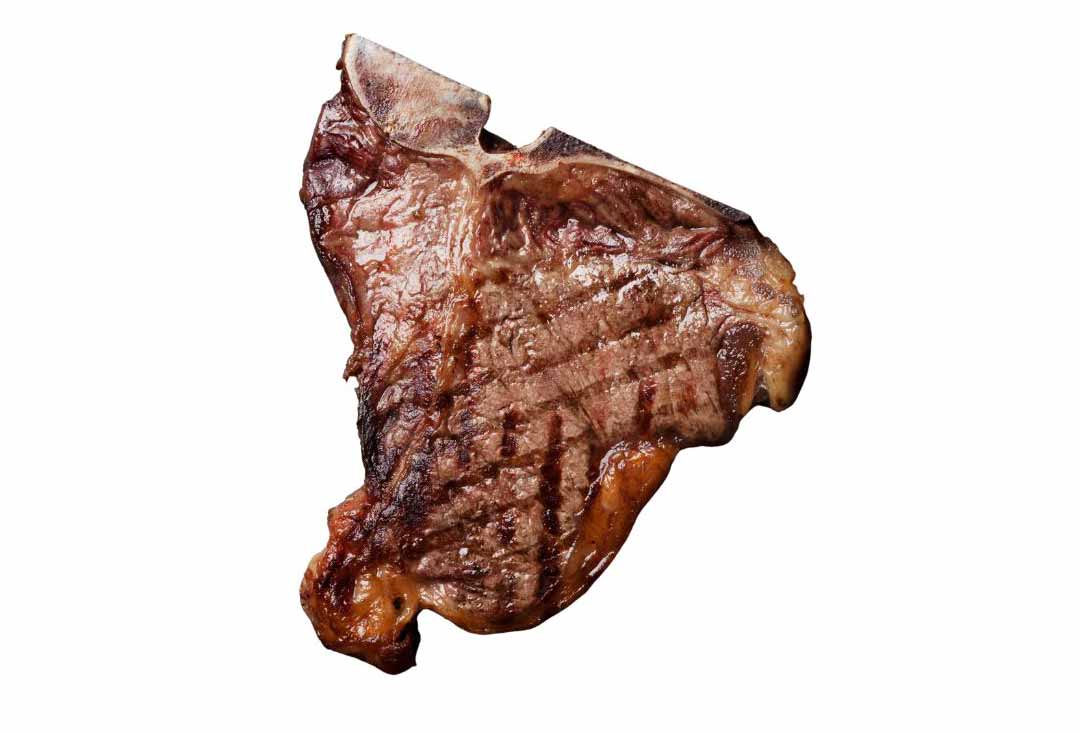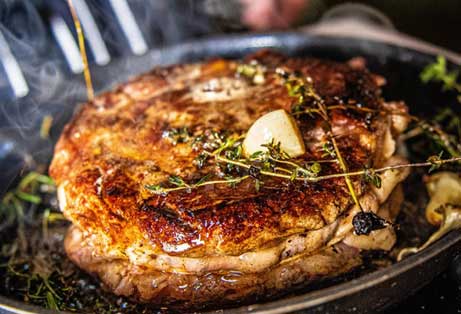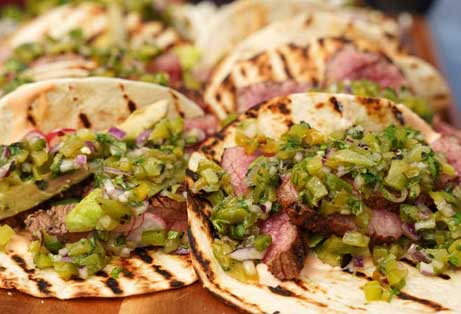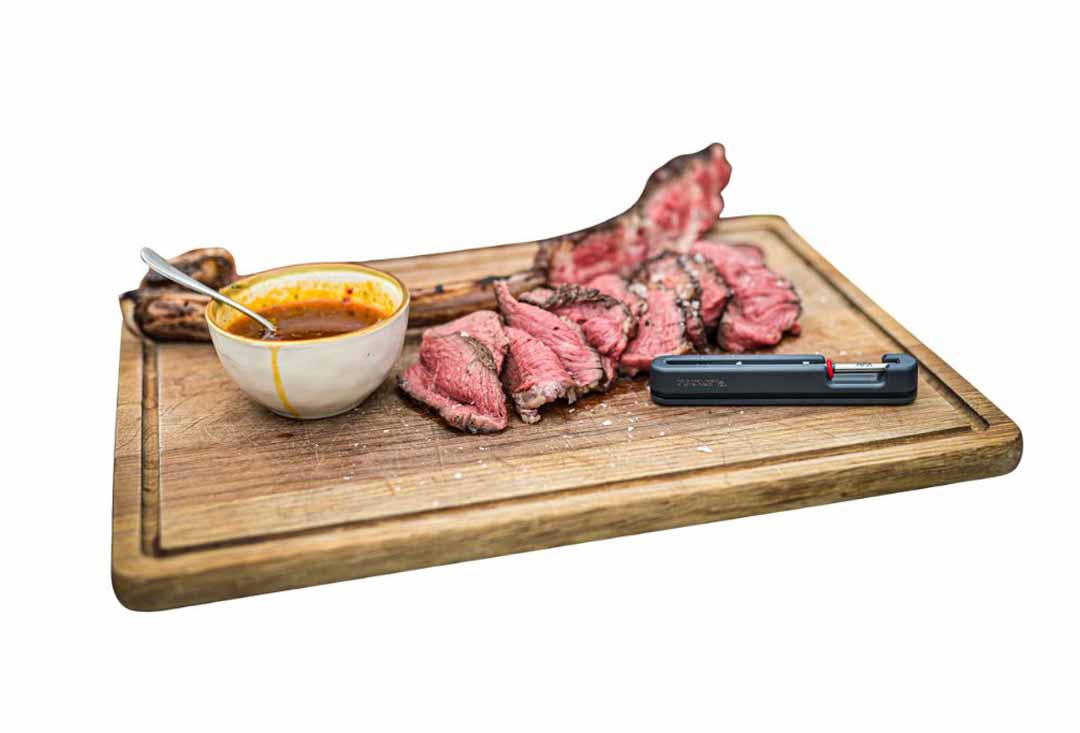
How to Achieve an Evenly Cooked Steak
Start at room temperature
Take your steak out of the fridge around 30-45 minutes before cooking. Cold steak straight from the fridge will cook unevenly, with the outside overcooked before the centre is done.
Reverse sear thicker steaks: Cook the steak slowly on a lower heat, then pan sear or cook on the grill for 60-90 seconds per side for a deep brown crust. This prevents the outside from burning before the inside reaches the right doneness.
Tips for the Perfect Steak
Flip often
The myth that you should only flip once isn’t true. Flipping every 30-45 seconds helps distribute heat more evenly.
Try sous vide
Cooking steak sous vide (in a temperature-controlled water bath) ensures perfect doneness edge to edge. Simply set your sous vide to the desired temperature, cook for 1-3 hours, then finish with a quick high-heat sear for a crispy crust.
Use a meat thermometer
Frequently check the temperature of your meat using an instant-read thermometer. The faster and more accurate it is, the more spot-on your finish will be.
Rest before slicing
Resting allows the temperature of the steak to even out and finish cooking, as well as helping it retain more juices.
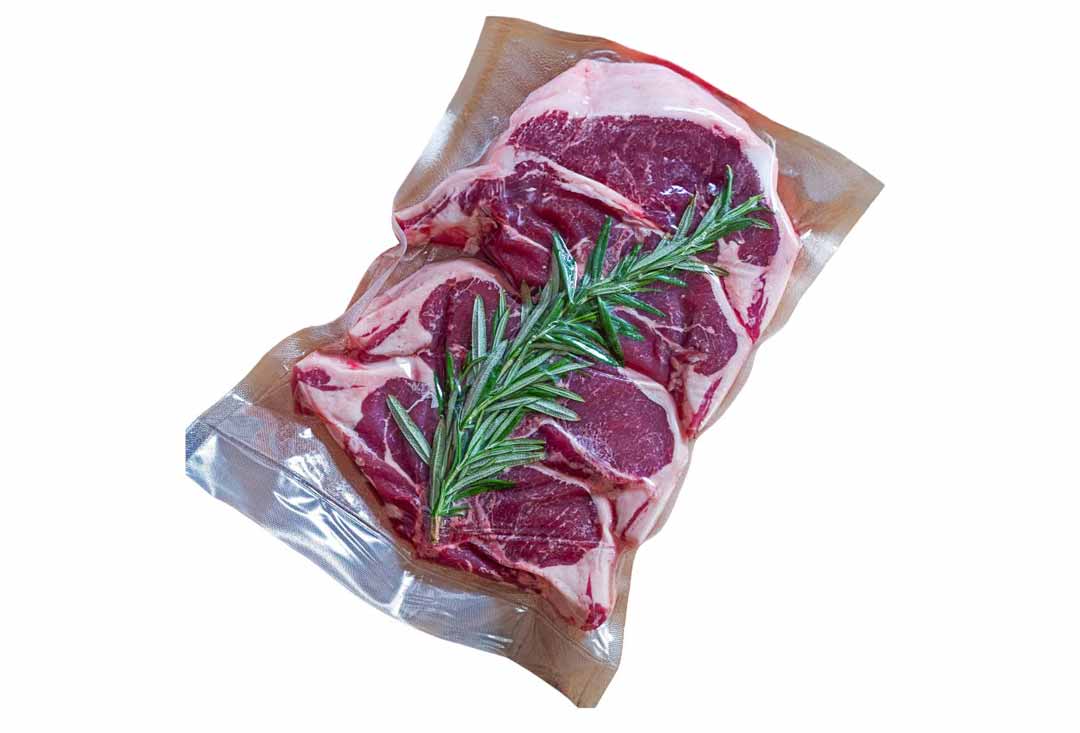
Steak Cooking Temperature Chart
Our steak cooked temp chart contains everything you need for any steak— from medium rare steak temperatures to medium well.
| Steak Doneness | Pull Temperature (remove from the heat) |
Final Temperature (peak temperature as it rests) |
|---|---|---|
| Rare | 48-50 °C (118-122 °F) | 52 °C (126 °F) |
| Medium rare | 52-54 °C (126-129 °F) | 56 °C (132 °F) |
| Medium | 56-58 °C (132-136 °F) | 60 °C (140 °F) |
| Medium well | 61-63 °C (142-145 °F) | 65 °C (149 °F) |
| Well done | 67-69 °C (153-156 °F) | 71 °C (160 °F) |
Best Doneness Levels for Popular Steak Cuts
Best Doneness Levels for Popular Steak Cuts
Different steak cuts are best cooked to different levels of doneness. Leaner cuts benefit from being cooked on the rarer side, whilst fattier cuts are best taken to a higher temperature to render the fat.
Rump: Medium Rare (56 °C/130 °F)
Rump is lean and best cooked to medium rare to preserve its tenderness and rich flavour.
Ribeye: Medium Rare to Medium (56 °C/130 °F to 60 °C/140 °F)
Ribeye has a higher fat content, so medium rare or medium allows the fat to fully render, enhancing juiciness and flavour.
Filet Mignon (Fillet): Rare (50 °C/122 °F or Medium Rare (56 °C/130 °F)
This lean, tender cut is best cooked to rare or medium rare to retain its delicate texture and buttery flavour.
Sirloin: Medium Rare to Medium (56 °C/130 °F to 60 °C/140 °F)
Sirloin is lean but still retains good flavour. Medium rare to medium is the perfect balance to keep it juicy while allowing it to remain tender.
T-Bone: Medium Rare (56 °C/130 °F)
T-Bone includes both tenderloin and strip steak, and medium rare ensures the tenderloin stays juicy while the strip steak develops a rich crust.
Final Steak Internal Temperature Tips
Think about the cut and whether a rarer finish will prevent it from drying out, or if a more medium finish will allow the fat to render for a juicier result.
Make sure to remove it from the heat 2-4 °C early, with larger cuts needing to come off earlier than smaller ones.
Always rest your steak for at least 10 minutes. Check the temperature to ensure it has finished carryover cooking and has started to cool.
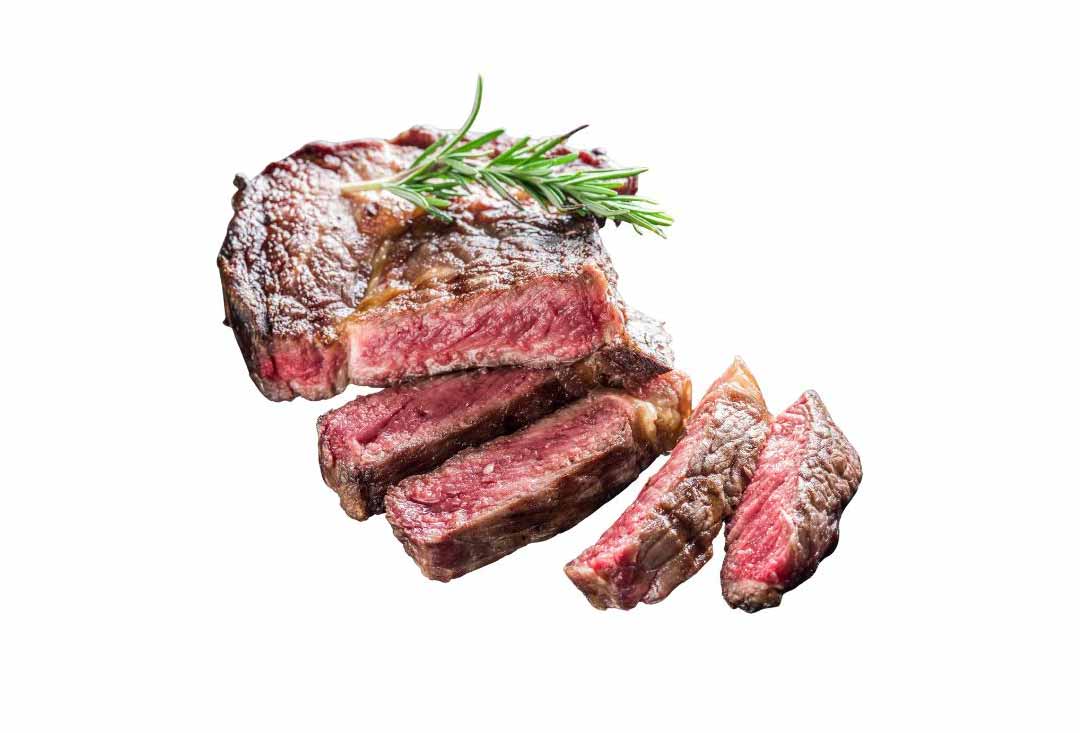
Best Steak Thermometers
Best for: Thick beef steaks, sharing steaks
Monitor your internal steak temperature from your phone or tablet using RFX so you never miss a beat. Monitor from anywhere with a WiFi connection and get an alert when it’s done. Ideal for cooking thick steaks and sharing steaks in the oven or on the BBQ.
Best for: Any type of steak
Steaks can go from rare to medium in an instant, so a fast-reading meat thermometer is a must. Spot-check the steak frequently as it cooks to take it off as soon as it’s cooked. With rapid one-second readings, the Thermapen ONE is especially good for fast-cooking options like pan-seared or grilled steaks.
Best for: Oven-cooked steaks
The DOT is the simplest thermometer for monitoring steak as it cooks. Insert the probe, set the temperature using the up/down arrows, and wait for the alarm to sound. Great for both oven and BBQ cooking.




